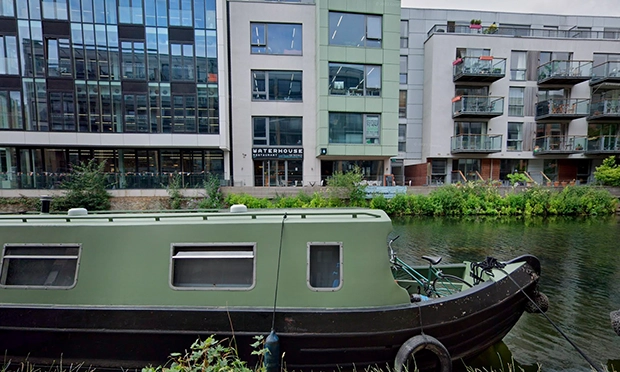The most ambitious cultural and educational project the capital has seen since the South Bank is approaching completion at the edge of Stratford
Media coverage of the tenth anniversary of the London 2012 Olympic and Paralympic Games has, with one welcome exception, been miserabilist or non-existent – what some might call a very British attitude to what was not only a superb sporting event but also the culmination of an extraordinary feat of infrastructure delivery few believed Britain was capable of – including, at the start, some of those centrally involved, as Alison Nimmo, a key figure in project, recently remarked
In keeping with all the moaning about what has already been accomplished, a fast-emerging new element of the legacy of the Queen Elizabeth Olympic Park has so far attracted little coverage. And yet the East Bank development is huge and has immense potential. In December 2013, when he was London’s Mayor, Boris Johnson claimed the endeavour would help seize “a historic opportunity to accelerate the transformation of east London and to deliver a significant economic boost to the UK”. Just because Boris Johnson said it doesn’t mean it isn’t true.
East Bank is the collective name for a group of major arts, cultural and educational organisations which have taken the bold step of expanding or consolidating their activities in a part of the capital which, prior to 2012, was neglected and largely unrecognised. The idea was born in the run-up to the Games as an additional dimension of the Park’s physical legacy, which at that stage was to be composed of the permanent sports venues, the reclaimed rivers, new wetlands and open spaces, the tech business and education hub which became Here East, and five residential neighbourhoods.
All of those things are still happening, but Johnson and others, including leading local government politicians of the time, believed something extra could be added. Johnson’s name for it was Olympicopolis, a Borisonian tongue-twister which deliberately echoed Albertopolis, the nickname given to the cultural cluster nowadays known as South Kensington, which Prince Albert steered and promoted using profits from The Great Exhibition of 1851. East Bank, as it became after Sadiq Khan became Mayor, is arguably the biggest venture of its kind since, and certainly since the the South Bank reached a settled form.
University College London (UCL), which had previously looked at founding a new campus on the site of Newham’s Carpenters estate, secured two spaces on the Park, one each side of the Waterworks River. One of these, One Pool Street, standing directly south of the Aquatics Centre, will open its doors in the coming weeks. The other, the larger Marshgate, next to the Orbit Tower, will follow next autumn.
UCL East, designed by architects Stanton Williams, is being joined by a new Victoria and Albert Museum (V&A East, left in main picture), a new Sadler’s Wells dance theatre and studios (Sadler’s Wells East), a new BBC home of live music and a new single campus home for the London College of Fashion (right in picture), all on a finger of land to the north of the Aquatics Centre known as Stratford Waterfront. Later, four blocks of housing, 35% of it affordable, will be added to the finger’s tip.
The homes of the four institutions have now largely taken shape under the masterplan auspices of Allies and Morrison in partnership with O’Donnell and Tuomey, who’ve produced V&A East and Sadler’s Wells East, and public realm specialists Arquitecturia. The whole of East Bank will become fully open in 2025, as will the V&A’s other venture in the Park, the new location of its vast reserve collection in the former Games time broadcast centre at Here East. V&A East Storehouse, unlike the collection’s old home, will be viewable by the public.
Last week, New London Architecture hosted an event at the British Council building close to East Bank at the edge of the Park, where Allies and Morrison’s Alex Wraight talked about the particular challenges of the Stratford Waterfront task, and V&A East’s Maia Ardalla described how the museum will work in new ways to involve local people and reflect the cultural character of the part of London it has chosen to expand to.
The London Legacy Development Corporation calculates that East Bank will bring an additional 1.5 visitors to the Park and its surrounding area each year and create more than 2,500 jobs. The LLDC published an Impact Report in June. If East Bank keeps the big promises made in its name, its effects on east London will be long-lasting and profound.
Dave Hill is the author of Olympic Park: When Britain Built Something Big available HERE.
Related
https://www.onlondon.co.uk/queen-elizabeth-olympic-park-east-bank-and-east-londons-future/




